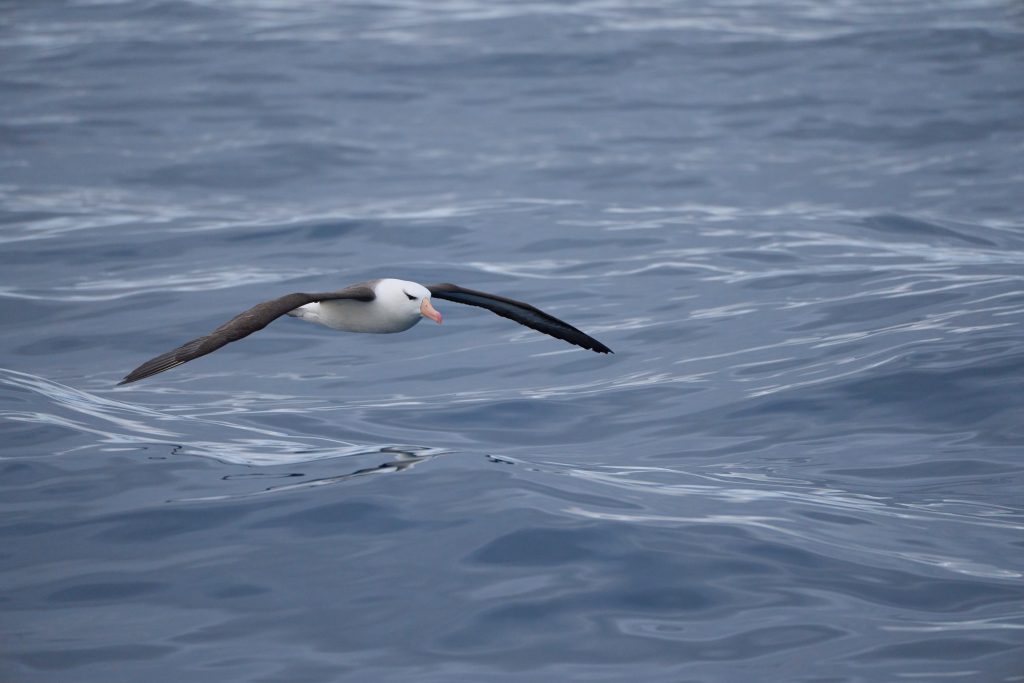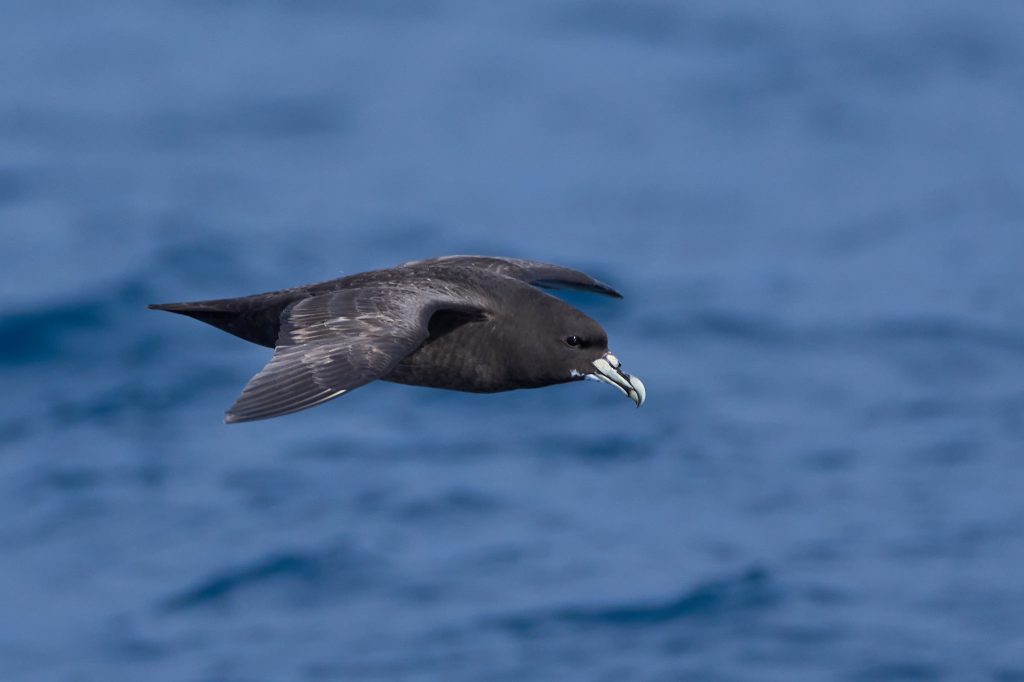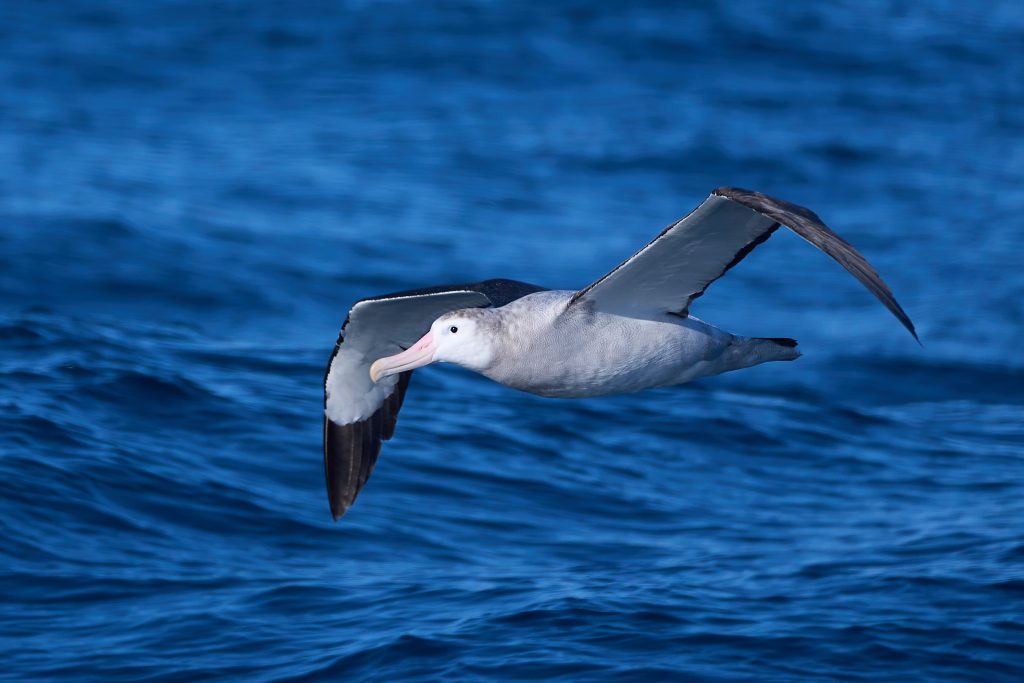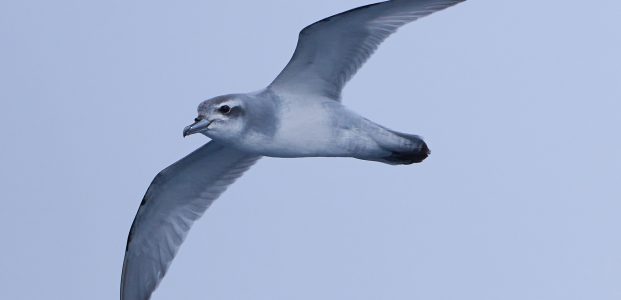Reading: The Autumn of the Ace (Louis de Bernieres)
Weather: Varied – from flat calm to SW 4-5 to fog …..
Evening meals: Spaghetti bolognese; spinach, bacon and onion tart with salad: risotto with bacon and salami; chicken coated in oregano and paprika; roast lamb, roast potatoes and veg.
Wildlife headcount: Commerson’s dolphins, storm petrels, giant petrels, wandering albatrosses, black-browed albatrosses, fairy prions, fur seals, humpback whales ….
With the anchor chokers finally in place we left for South Georgia just after 4am on December 14th. Heading out through the narrows we saw lots of magellanic penguins swimming around from the colonies we had seen around Gypsy Cove, but we were trying to watch for them while we hoisted the sails in the shelter of Port William. With full sail hoisted we set off at 7-8 knots in around 18 knots of wind. Unfortunately, this didn’t last and within 8 hours or so the wind dropped and we spent the next 24 hours or so under engine.
The wind came back up for 18 hours or so, but then another day or so under engine while we waited again for a breeze. Finally the breeze kicked in from the north west. Gradually it built to around 16-18 knots with some occasional gusts in the 20’s. The sea though stayed relatively flat for these latitudes and so we had some great sailing at between 7 and 9 knots We headed slowly south – generally on a course of about 120oC – with the wind slightly aft of the beam. It held for a couple of days as we chalked up mileages of around 170 – 180 miles a day.
I had shifted watches and was now in the 12-6 watch, so came on watch at midnight and then, after porridge, went off watch to sleep. Back on again at lunchtime and back to bed after dinner at 7pm or so. This took a bit more getting used to and I was almost used to it when five days later we closed with the coast of South Georgia.
The last day the weather had another card to play – fog! The breeze held up, but the visibility didn’t. With a veil of white ahead of us, we posted a lookout in the bow at all times and the radar was on, just in case of stray ice. We each did 20 minutes or so and then rotated round. It was surprisingly relaxing just staring ahead and we started seeing more and more seals – fur seals – as we got closer. Around 4pm on the 18th the wind suddenly died, almost as if someone had flicked the kill switch. By the time we had bird island on the starboard beam about 8 miles away, we had hoped that the fog would lift a little, but it resolutely held its grip on South Georgia and it wasn’t until after around 14 hours of fog at just after 6pm that Gijs called down to say he had sighted land. The initial view was a slightly ethereal one of mountains shrouded in white, hinting at what was there but not letting us see clearly. This continued for the final stages as we crept round under chart plotter and radar, eyes giving final confirmation of the short range we could see.
The last two hours, despite the limited view though was stunning. The bird life flocked around us – albatrosses, cape petrels, fairy prions and petrels circling us frequently as they fed off the plentiful waters. Our view though was captivated by the fur seals. Sometimes they swam in large groups and sometimes individually, but always they had a playful, exuberant look to them as they porpoised through the waves, jumping and diving. By the time we got close they were just everywhere – your eyes constantly drawn to them. The icing on the cake though came with the humpback whales. We tracked a group from the port quarter around the stern to the starboard side, watching their blows to see where they were. The blows were not that high and quite diffuse in nature, but easy to follow around, indicating quite a few of them. Then suddenly they started breaching. A huge head would emerge, hang slightly in a vertical position until, almost in slow motion, gravity would reassert itself and they would topple down sideways with an ponderous splash. This carried on for about fifteen minutes and we were all utterly captivated – occasional exclamations of awe at the power of these huge animals. It felt almost like a welcoming committee to South Georgia.



Finally at 10pm, after a run of just over 750 miles, we crept into Rosita Bay on the northern side of the island and anchored – fur seals bobbing around us in the strands of kelp we drifted through. It took a few minutes of thought before I started wondering how we were anchored in the middle of a bed of seaweed when the depth sounder put us in 16 metres of water – I then realised just how long the kelp strands can grow. As the engine went off, we expected silence, but no way …. The screeching and calling of fur seals hinted at the huge numbers on the beaches around the bay, but we would have to wait until morning to see them.

